
In the Right Ballpark
A Melbourne baseball stadium uses AV to give people an all-American night out.
Text:/ Preshan John
Let’s face it: the average Aussie probably hasn’t attended a baseball game on home shores. In fact, your knowledge of the game is likely derived from a term’s worth of phys-ed at school and American TV. That was certainly my story, so I was forging new experiential territory when I rolled up to game at Melbourne Ballpark to check out how this 30-year-old venue was making itself central to the popularisation of baseball in Australia.
Home to the Melbourne Aces baseball team, the ballpark sits on a spacious plot of land behind the industrial back roads of Altona. The stadium was opened in 1990 with the aged tin shed construction betraying its age. Games are played here more than 200 days of the year from local recreational games to state and professional teams.
The Melbourne Aces say it’s on a mission to revive baseball in Australia and backed it up by splurging on its home stadium. Bringing the venue’s AV into the 21st century was a key focus in the bigger picture.
Justin Huber, General Manager of the Melbourne Aces Baseball Club recognised this from early on. “We’re specifically looking at the tools with which we can create the type of experience and environment that’ll keep our fans coming back again and again. It was important to our team and the owners of our team to put a state-of-the-art system in place.”
Mozaix: (03) 9558 0433 or www.mozaix.com.au
PAVT (AtlasIED, Powersoft): (03) 9264 8000 or www.pavt.com.au
TAG (QSC): (02) 9519 0900 or www.tag.com.au

HIT & RUN
Fitting out a baseball stadium isn’t a typical job for an Australian integrator but the project requirements are familiar. Today’s game experience is more than watching a team of uniformed players hit and chase a ball — it’s an entertainment experience intended as a family night out. An 18m LED screen at the field’s far end reflects this priority. Hot dogs and popcorn are for sale along with Aces merch and pints of Coors.
“There is an increasing need for better production at these games,” says Paul Tucker. “The client needed something easy to use, something that would reproduce music well and increase the excitement, vibe and crowd engagement.”
Paul heads up Mozaix, a Melbourne AV integration business. His was the task of installing a PA system to adequately supply clear audio to all 2200 seats in the grandstands. Unlike most other sporting venues, the seating area at a baseball stadium is a confined to a quarter-circle behind and around the batting position looking out over the diamond shaped field.
Spec’ing a PA system with a successful history in US baseball stadiums made a lot of sense. “I called up PAVT which very quickly recommended the AtlasIED music horns as the right box for the job,” recalls Paul. “It competes with an American college baseball or football stadium and we were able to show the Melbourne Aces case studies from The States which made them more comfortable with the product.”
Each AtlasIED music horn is comprised of a 12-inch woofer and a horn with varying flare angles depending on coverage needs. Four FS12T 99 boxes point down at the grandstands (90° x 90°) while three FS12T 94 boxes push audio out to the field with a tighter 90° x 40° dispersion. These are run by a pair of Powersoft Quattrocanali 2404 amplifiers. Complementing the main system are 10 Yamaha VXS5 five-inch surface-mount speakers in the dug out and premium field seating areas, as well as the corporate boxes.
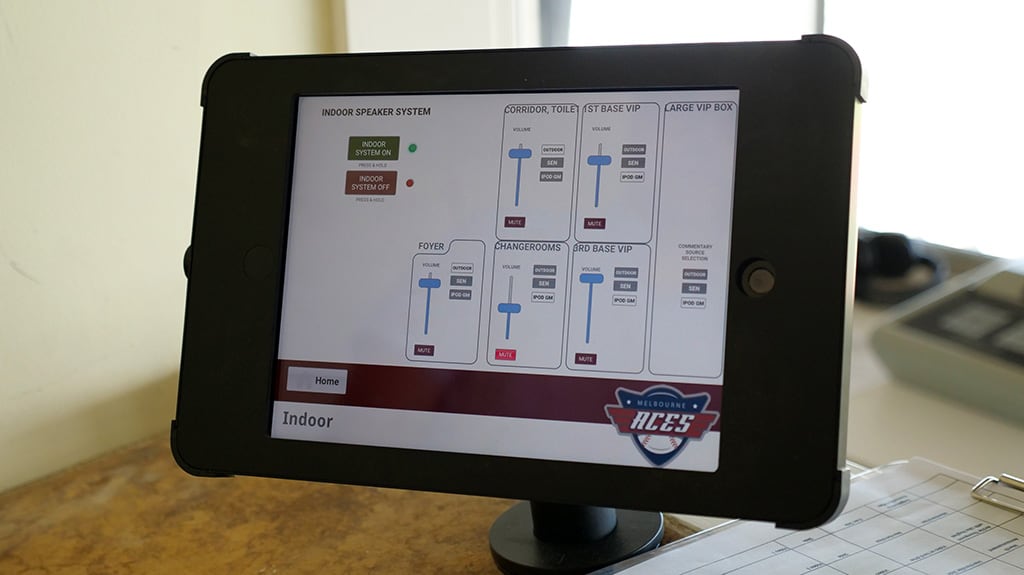
ON THE NETWORK
On top of the PA itself, Mozaix also installed loudspeakers throughout the foyer, bathrooms and corridor areas of the stadium. Managing all the I/O is a single Q-Sys Core sitting in the announcer’s booth. Mozaix used Q-Sys processing across most inputs and left Melbourne Ballpark staff with control over basic parameters using iPads.
“Q-Sys makes management of the audio easy,” explains Paul. “They’ve been very happy. The ground manager knows how to use the system back to front and he’d say he’s the least technical person here.”
Announcers and broadcasters use a set of headphones, each of which connect to an RDL station with a mic input, headphone output and mute button. External antennas ensure the Sennheiser Evolution G4 radio mics enjoy reception across the majority of the grounds. A pair of shotguns serve as crowd mics which Paul discreetly mounted inside security camera enclosures as a means of weather proofing.
Justin is pleased with the result. “The old system left dead spots everywhere — in some parts of the ballpark you couldn’t hear any sound and other parts you’d feel like your eardrums were about to explode. Now the sound is crisp, clean and consistent. Plus the system is versatile and nimble enough to do everything we want into the future.”

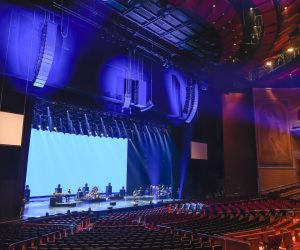
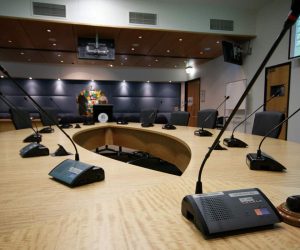
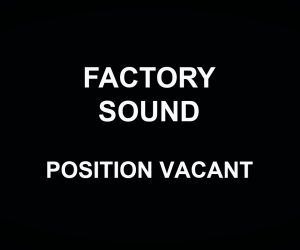








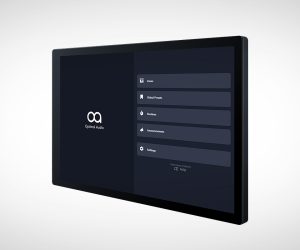


RESPONSES